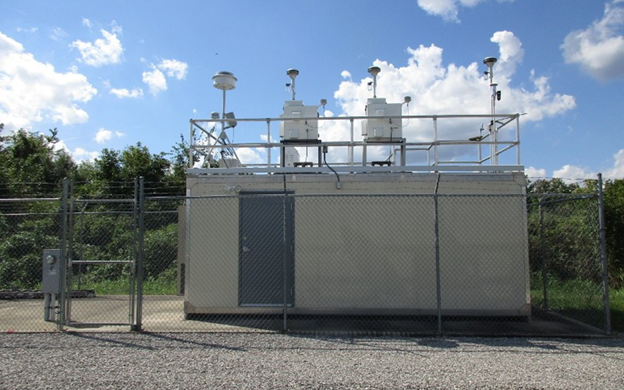Explainer: How Indiana Tracks Ozone For Better Hoosier Health
- By Zachary Roberts, TheStatehouseFile.com
- July 15, 2022
- INDIANAPOLIS—Over 10% of Indianapolis residents have asthma, and over 8% have the chronic obstructive pulmonary disease (COPD). Both of these rates are above the national average and cause daily problems.
Lake and Floyd counties now meet EPA standards for ground-level ozone
INDIANAPOLIS—Lake, and Floyd counties now meet the National Ambient Air Quality Standard for …
Yet, “since the air we breathe is invisible and we have little choice or control over it, I think air quality issues often get less spotlight in environmental conversations,†said Lindsay Trameri, the Indiana Office of Sustainability’s community engagement manager.
Although ozone in the sky (stratospheric ozone) is beneficial in protecting Earth from heat and harmful ultraviolet rays, ground-level ozone is dangerous. According to the United States Environmental Protection Agency, too much ground-level ozone can harm people and animals by irritating their respiratory systems, causing coughing, throat irritation and discomfort in the chest, aggravating asthma and other chronic lung diseases, reducing the immune system’s ability to fight off bacterial infections in the respiratory system, inflaming and damaging lungs, and causing permanent lung damage.
To better protect Hoosiers and our air quality, the Office of Sustainability has been declaring Knozone Action Days throughout the summer. It bases these decisions on measurements and data it receives from Indiana Department of Environmental Management scientists.
Knozone Action Days are declared when the air quality could be dangerous and certain groups, specifically those with health and/or breathing problems, should avoid being outside for extended periods of time. Along with keeping those at risk indoors, Hoosiers are supposed to follow action day guidelines and tips to help improve air quality.
IDEM scientists measure and record air quality data and wind speed and direction inside these monitoring stations.
The rest of the state uses the term Air Quality Action Days (AQADs), according to Barry Sneed, a public information officer with IDEM, while Indianapolis uses Knozone Action Days.
“Those who are aware indicate an understanding of the Knozone message, and the majority would practice energy-efficient behaviors—most notably turning off lights, combining errands in one trip, and completely filling their gas tanks—most days as well as on Action Days,†said Trameri.
Hoosiers can take action to help improve air quality by:
- Refueling automobiles after 7 p.m.
- Reducing the use of anything that requires power from fossil fuels.
- Not letting vehicles idle.
- Walking, biking or using public transport to get to work.
- Avoid using garden, household, and workshop chemicals until the air quality has returned to a healthy level (the heat and sunlight can react with these chemicals and form ozone.)
- Spreading the word.
“Someone may not be in the position to incorporate other actions into their routines, but knowing that their child with asthma or their neighbor with COPD should remain indoors for the day is really important,†said Trameri. “Poor air quality can really aggravate their symptoms.â€
IDEM scientists measure air quality with devices called ambient air quality monitors, said Sneed. These devices measure how much of each criterion pollutant there is in the area. According to the EPA, criteria pollutants are ground-level ozone, particulate matter, carbon monoxide, lead, sulfur dioxide, and nitrogen dioxide. All of these lessen the quality of air we breathe when in abundance. The scientists then take wind direction and speed into consideration of how this will harm air quality to create air quality forecasts, following the National Ambient Air Quality Standard.
“All state ambient air monitoring networks follow federal regulations to ensure data are consistent, scientifically defensible, and comparable.â€, said Sneed.
He said Indiana has improved when it comes to air quality, but the work is not done.
“Many federal and state strategies have been implemented over the years that have improved ozone air quality,†he said. “However, as standards continue to be tightened, we will continue to see Air Quality Action Days when weather conditions are conducive to unhealthy concentrations.â€
IDEM also offers a Smogwatch and access to a national perspective on air quality information.
For those who want to go beyond following Knozone Action Day guidelines, Trameri says the Office of Sustainability’s Thriving Buildings Program can help managers of buildings be more energy efficient and help them save on utility and public health costs.
“Folks who have an appetite for bigger system change should advocate for their employers to operate more energy efficient buildings,†she said.
FOOTNOTE: Â Zachary Roberts is a reporter for TheStatehouseFile.com, a news website powered by Franklin College journalism students.





